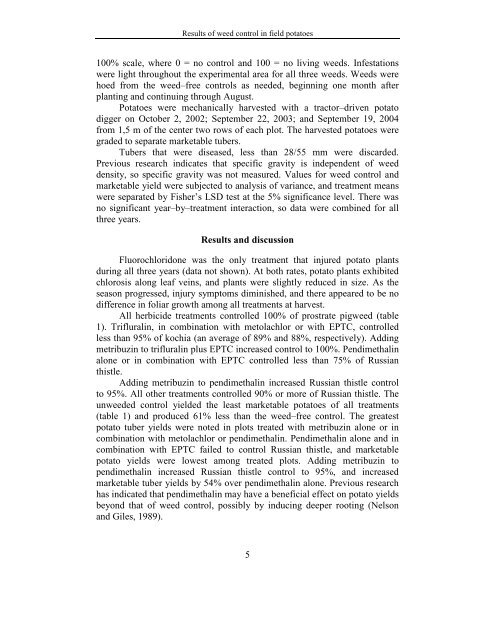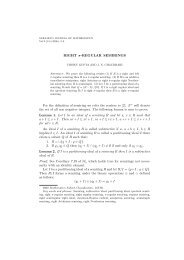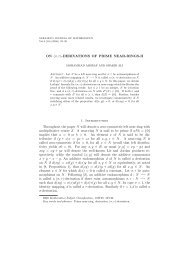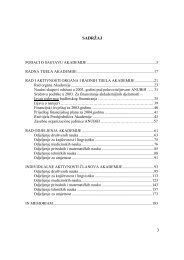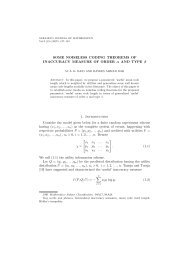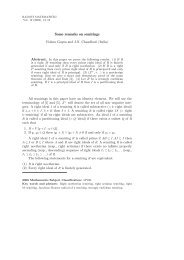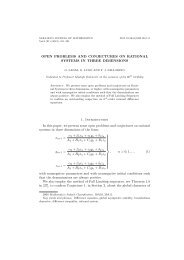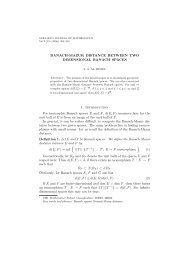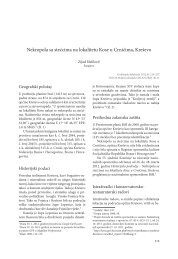HERBOLOGIA - anubih
HERBOLOGIA - anubih
HERBOLOGIA - anubih
You also want an ePaper? Increase the reach of your titles
YUMPU automatically turns print PDFs into web optimized ePapers that Google loves.
Results of weed control in field potatoes<br />
100% scale, where 0 = no control and 100 = no living weeds. Infestations<br />
were light throughout the experimental area for all three weeds. Weeds were<br />
hoed from the weed–free controls as needed, beginning one month after<br />
planting and continuing through August.<br />
Potatoes were mechanically harvested with a tractor–driven potato<br />
digger on October 2, 2002; September 22, 2003; and September 19, 2004<br />
from 1,5 m of the center two rows of each plot. The harvested potatoes were<br />
graded to separate marketable tubers.<br />
Tubers that were diseased, less than 28/55 mm were discarded.<br />
Previous research indicates that specific gravity is independent of weed<br />
density, so specific gravity was not measured. Values for weed control and<br />
marketable yield were subjected to analysis of variance, and treatment means<br />
were separated by Fisher’s LSD test at the 5% significance level. There was<br />
no significant year–by–treatment interaction, so data were combined for all<br />
three years.<br />
Results and discussion<br />
Fluorochloridone was the only treatment that injured potato plants<br />
during all three years (data not shown). At both rates, potato plants exhibited<br />
chlorosis along leaf veins, and plants were slightly reduced in size. As the<br />
season progressed, injury symptoms diminished, and there appeared to be no<br />
difference in foliar growth among all treatments at harvest.<br />
All herbicide treatments controlled 100% of prostrate pigweed (table<br />
1). Trifluralin, in combination with metolachlor or with EPTC, controlled<br />
less than 95% of kochia (an average of 89% and 88%, respectively). Adding<br />
metribuzin to trifluralin plus EPTC increased control to 100%. Pendimethalin<br />
alone or in combination with EPTC controlled less than 75% of Russian<br />
thistle.<br />
Adding metribuzin to pendimethalin increased Russian thistle control<br />
to 95%. All other treatments controlled 90% or more of Russian thistle. The<br />
unweeded control yielded the least marketable potatoes of all treatments<br />
(table 1) and produced 61% less than the weed–free control. The greatest<br />
potato tuber yields were noted in plots treated with metribuzin alone or in<br />
combination with metolachlor or pendimethalin. Pendimethalin alone and in<br />
combination with EPTC failed to control Russian thistle, and marketable<br />
potato yields were lowest among treated plots. Adding metribuzin to<br />
pendimethalin increased Russian thistle control to 95%, and increased<br />
marketable tuber yields by 54% over pendimethalin alone. Previous research<br />
has indicated that pendimethalin may have a beneficial effect on potato yields<br />
beyond that of weed control, possibly by inducing deeper rooting (Nelson<br />
and Giles, 1989).<br />
5


